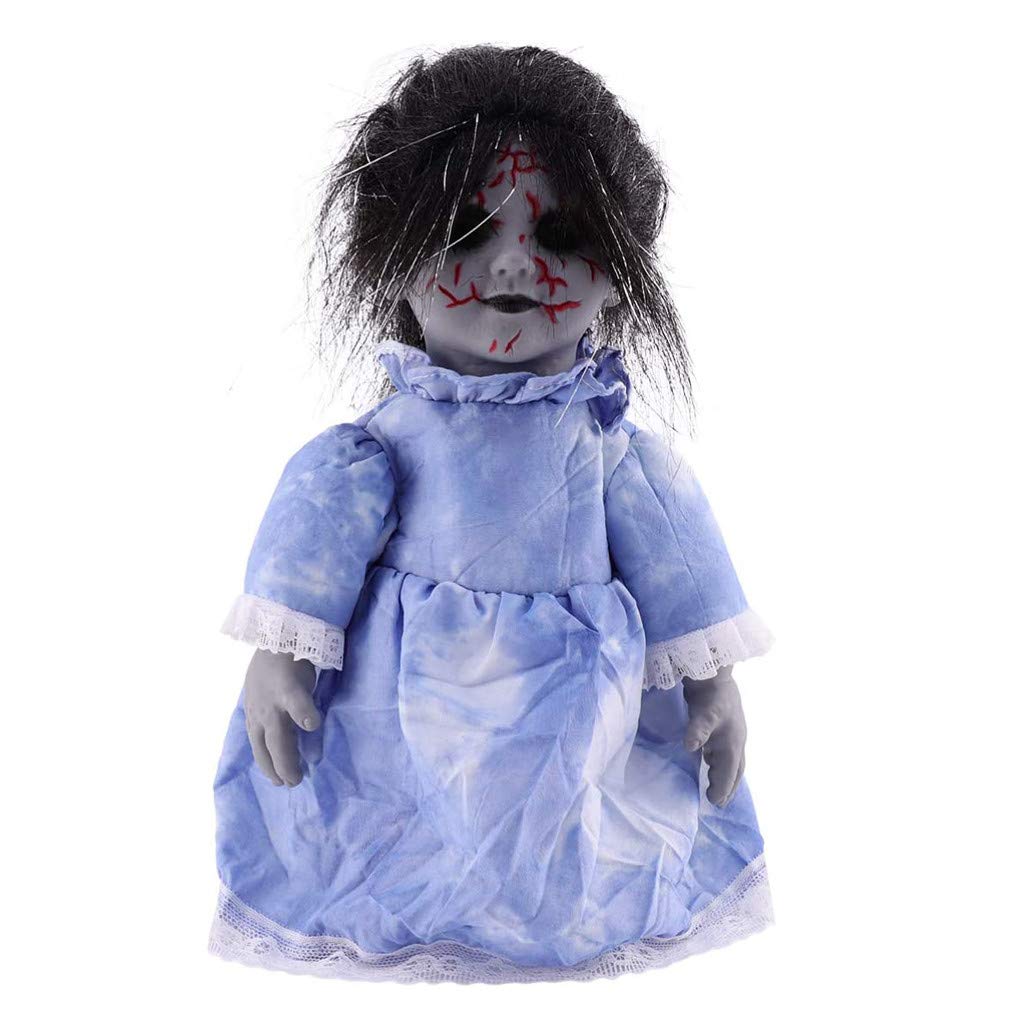Dolls have been a part of human culture for centuries, with evidence of dolls dating back to ancient civilizations. While dolls were originally created as toys for children, their images and concepts evolved to encompass religious, cultural, and societal beliefs. As time progressed, dolls became more intricately designed, leading to some genuinely terrifying creations. Here’s the truth about the origins of creepy dolls.

The Beginnings of Dolls
The invention of dolls is impossible to track, as their origins are present in every independent human civilization. Ancient Egyptians would make dolls for their children from wood, ivory, or pottery, while the Greeks crafted dolls from clay or bone. These toys were mass-created and were often in the likeness of animals and people. It wasn’t until the Industrial Revolution that dolls began being mass-produced for profit.
The First Creepy Doll
One of the earliest dolls that could be described as “creepy” was the German “Grotesque” doll made in the 1800s. These dolls were manufactured to appear deformed and disabled and were used to entertain adults rather than children. With their exaggerated facial features and unusual postures, these dolls were a radical departure from traditional children’s toys.
Dolls Used for Religious Purposes
Dolls have been used as part of religious observances since the earliest of times. In ancient Greece, dolls were made to pay tribute to the goddess Artemis. Some Native American tribes created dolls as part of religious ceremonies to invoke the spirits of their ancestors. In contemporary times, dolls are still used in religious ceremonies. In the Catholic Church, for example, dolls are sometimes used to represent saints and other holy figures.
The Rise of Peg Dolls
During the 19th century, “Peg Dolls” started to become popular toys. These dolls were made from wooden pegs that were easily sourced and could be carved and painted in-house. As toys, they were fairly unremarkable, but some individuals began creating grotesque versions of these dolls to entertain and frighten people. These elaborately detailed dolls gave rise to modern iterations of creepy dolls.
The Impact of War on Doll Design
Toward the beginning of the 20th century, the toy industry began creating more realistic-looking dolls as a response to the Great War. Manufacturers started to produce dolls with facial expressions, eyelashes, and even hair that grew from their scalp. This more realistic design began setting the standard for dolls to be highly detailed and crafted with care, leading to dolls that looked more lifelike than ever before. However, this attention to detail also meant that some dolls started to look more unsettling and creepy.
Uncanny Valley Effect in Dolls
The “uncanny valley” is a term used in robotics to describe when a human-like robot looks almost realistic but not quite. This causes humans to feel a sense of unease and discomfort. The same concept applies to dolls as well. As dolls became more realistic-looking, they started to cross the uncanny valley, with their almost-human-but-not-quite appearance making them unsettling to many people.
Hollywood’s Influence on Creepy Dolls
As dolls continued to evolve in design, Hollywood started to incorporate creepy dolls into horror movies. One of the earliest examples of a creepy doll in film was “The Great Gabbo” in 1929. From there, dolls continued to be used in films to illicit fear and terror, with iconic characters like Chucky from “Child’s Play” and Annabelle from “The Conjuring” series. As these movies became more popular, dolls started to become associated with horror and creepiness in the public imagination.
The Dark Side of Doll Collecting
Dolls are often collected and traded by enthusiasts for hobby purposes. However, some collectors take their interest in dolls to a dark place. Some individuals collect antique dolls with missing or damaged parts, often creating a look that is unintentionally creepy. Some doll enthusiasts create dolls themselves, resulting in highly realistic and deeply unsettling dolls.
Cultural Differences in Dolls
While dolls are a universal concept throughout humanity, different cultures have their particular variations. In Japan, for example, “Hina” dolls are created for the Girl’s Day celebration. These dolls are seen as sacred, and children aren’t even supposed to touch them. In contrast, in Mexico, dolls known as “Lloronas” are created to represent the souls of the dead. These dolls are often found near grave sites and are said to have the power to grant wishes.
Modern Creepy Dolls
In recent years, creepy dolls have seen a resurgence in popular culture. In particular, the internet has provided a platform for individuals to create and share photos of their latest creepy creations. The popularity of creepy dolls has also been fueled by social media challenges, with individuals attempting to create the creepiest-looking dolls possible.